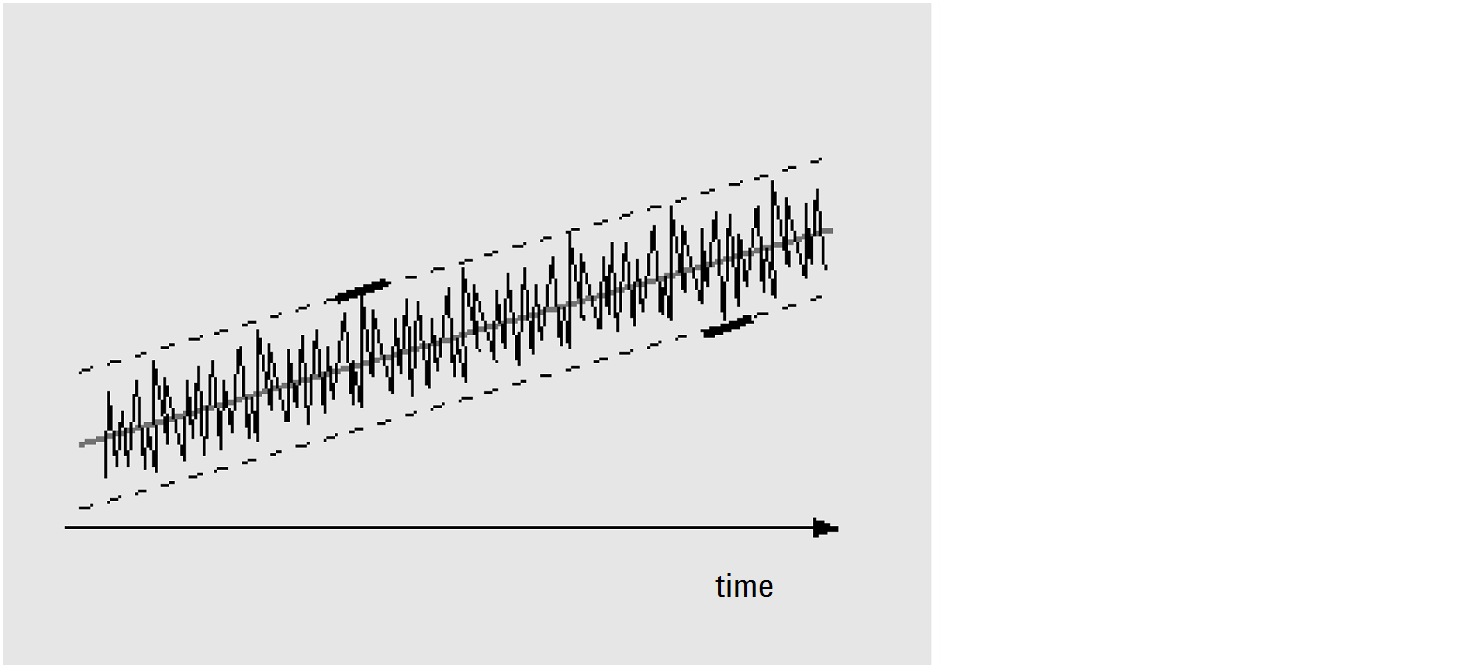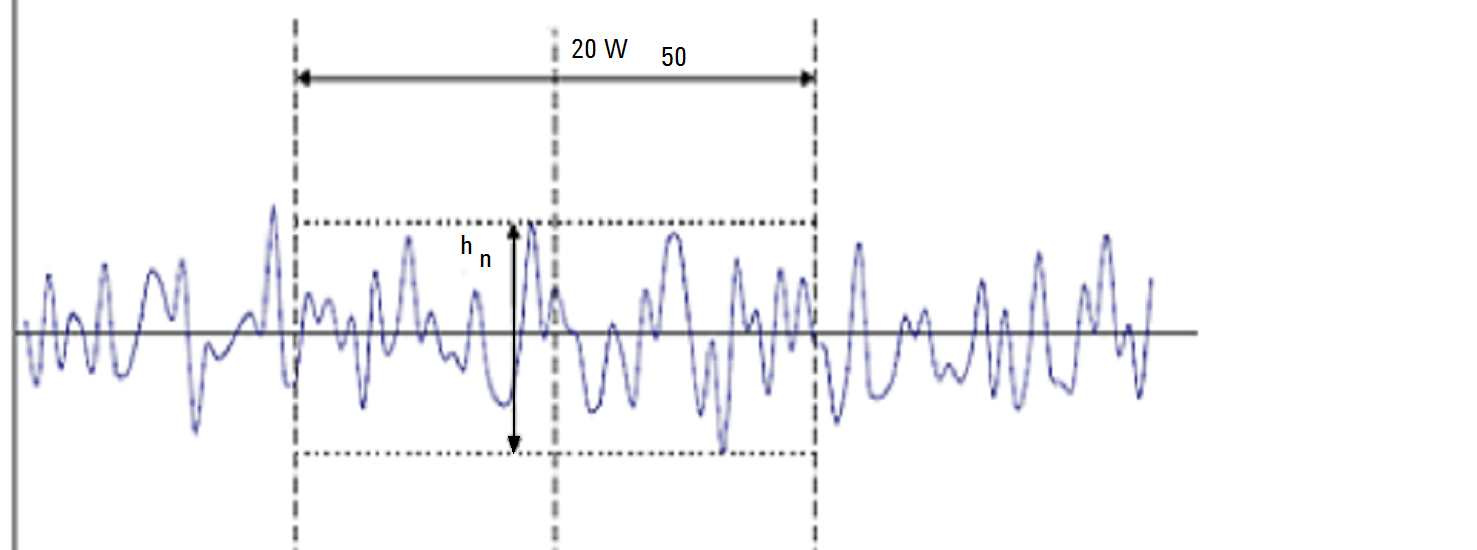Noise calculation using the peak-to-peak formula
The drift is first calculated by determining the linear regression using all the data points in the time range of a peak. The linear regression line is subtracted from all data points within the time range to give the drift-corrected signal.
The peak-to-peak noise is then calculated using the formula:
N = Imax - Imin
where | |
N |
Peak-to-peak noise |
Imax |
Highest (maximum) Ix value in the time range |
Imin |
Lowest (minimum) Ix value in the time range |
Ix |
Intensity of the signal, corrected by the drift (drift is calculated using the LSQ formula) |
For European Pharmacopoeia calculations the Peak-to-Peak noise is calculated using a blank reference signal over a range of -10 and +10 times W50 flanking each peak. This region can be symmetrical to the signal of interest, or asymmetrical if required due to matrix signals.
Where
20 W50 is the region corresponding to the 20 fold of W50.
hn is the maximum amplitude of the baseline noise in the 20-fold W50 region.

